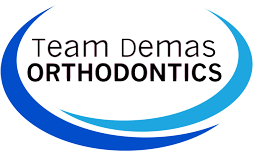Today’s orthodontic specialists use cutting-edge oral health science to tailor each patient’s treatment to their individual needs. Some patients may seek treatment to fix an overbite or an underbite.
Other patients may want to fix crowded teeth, teeth faced too far apart or a poorly aligned bite. And still other patients may seek orthodontic treatment to address a weak or receding chin.
Will braces fix a weak chin? The answer is less simple than the question might appear to be. The truth is, braces can be part of the solution for correcting a weak chin, but each patient is unique. Only a consultation with your orthodontist can provide a complete answer to this question!
What Causes a Weak Chin?
A weak chin can be caused in part by simple genetics. If one or both parents have a weak chin, a child might also have a weak chin. But tooth and jaw alignment can also have an impact on whether a child grows up with a weak or receding chin.
While it isn’t something most people commonly think about, the growth rate of the upper and lower jaws isn’t always well matched. Sometimes the upper jaw grows faster than the lower jaw, and sometimes the reverse is the case.
This imbalance in jaw growth can cause the chin to appear weak or receded. Another common reason the lower jaw can appear weak is when there is an extreme overbite in the upper jaw. Sometimes this is an optical illusion caused by the overly noticeable upper teeth, and sometimes there is also a recessed chin when jaw growth is not evenly paced.
What Can Fix a Weak Chin?
One of the first questions patients often ask is will braces fix a weak chin? Another common question is will braces fix my jaw?
The degree of correction needed as well as where the correction is needed can determine whether braces alone will fix the appearance of a weak chin. Sometimes, simply moving the teeth into the proper alignment, where the bite is healthy and the upper and lower jaw are in correct position to each other, can even out the appearance of the chin as well.
But when the problem is with the jaw bone growth, the best approach may include orthognathic (jaw) surgery. This type of surgery can be performed by an orthodontic specialist. The goal is to provide correction for unbalanced or unhealthy growth of the facial jaw bones.
Sometimes using orthodontic treatment and orthognathic surgery together is the best approach to provide a healthy, straight smile and an even chin appearance. Because each patient’s mouth is completely unique, there is no “one size fits all” approach to correcting a weak chin.
What Type of Orthodontics Can Fix a Weak Chin?
Most patients opt to first use orthodontics to correct a weak chin. This makes sense in two ways: orthodontics will also ensure the healthiest, straightest smile and orthodontics is less invasive than jaw surgery.
This is often called “functional orthodontics.” The term functional refers to optimizing oral health while creating a pleasing facial appearance for the patient. Sometimes patients call this “the best of both worlds!”
Today’s orthodontic science has a wealth of cutting-edge tools to reposition, reshape and realign the teeth and jaws. Some devices are removable, such as retainers.
Some devices are semi-permanent, such as positioners which can be manually adjusted in micro-increments to provide the desired alignment and curve to the jaw and teeth. Use of these devices by a skilled orthodontic specialist can avoid the need for jaw surgery altogether!
Besides Straight Teeth, What are the Benefits of Braces?
What If Braces Won’t Fix My Weak Chin?
For adult patients who are wondering if braces will fix their receding chin, orthognathic surgery may be recommended as a one-time, permanent corrective measure to fix a weak jaw.
There are some oral health issues which are more easily corrected during the childhood or teenage years before the jaw bones stop growing and become set. For this reason, braces and orthodontic aids are more successful in correcting a weak chin when the patient is young.
When you visit your orthodontist, the first step will be to determine if sufficient results can be obtained through orthodontic treatment alone. Here, the least invasive approach is always preferable.
If your orthodontist studies your mouth and X-rays and determines that orthodontic treatment alone won’t be able to fully provide the results you want, you can ask for a referral to an orthognathic surgeon. Some orthodontists offer both services, which can streamline and simplify your treatment process!
X-rays and an oral exam can help determine whether your weak chin is a result of malocclusions (bite and tooth placement issues) or facial jaw growth or both. From there, your orthodontist and orthognathic surgeon can propose a customized treatment plan to achieve a stronger looking lower chin.
What Does Orthognathic Surgery Involve?
It is important to remember that braces aren’t your only treatment option. There are also situations where orthognathic surgery alone may be able to deliver the appearance results you are looking for! In this case, a single procedure is usually all it takes to correct the appearance of your chin.
You have options including orthodontia and orthognathic surgery, and both approaches can be combined to improve your oral health and your facial appearance at the same time.
By making the commitment to pursue optimal oral health while achieving your appearance goals, you give yourself the gift of increased health and self-confidence!
Team Demas Orthodontics
27 Meriden Ave #2a, Southington, CT 06489, USA
Phone: 860-276-0333



